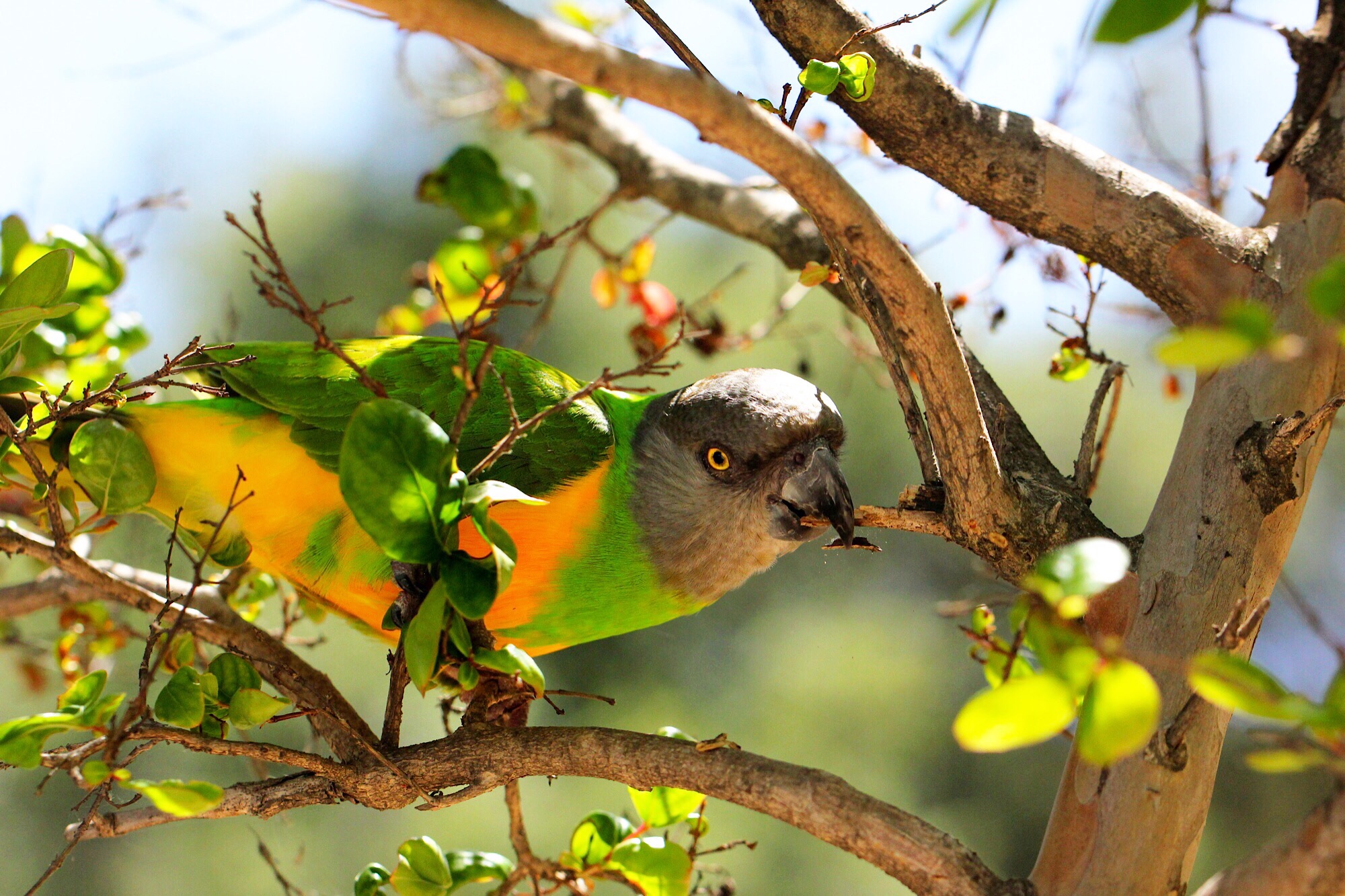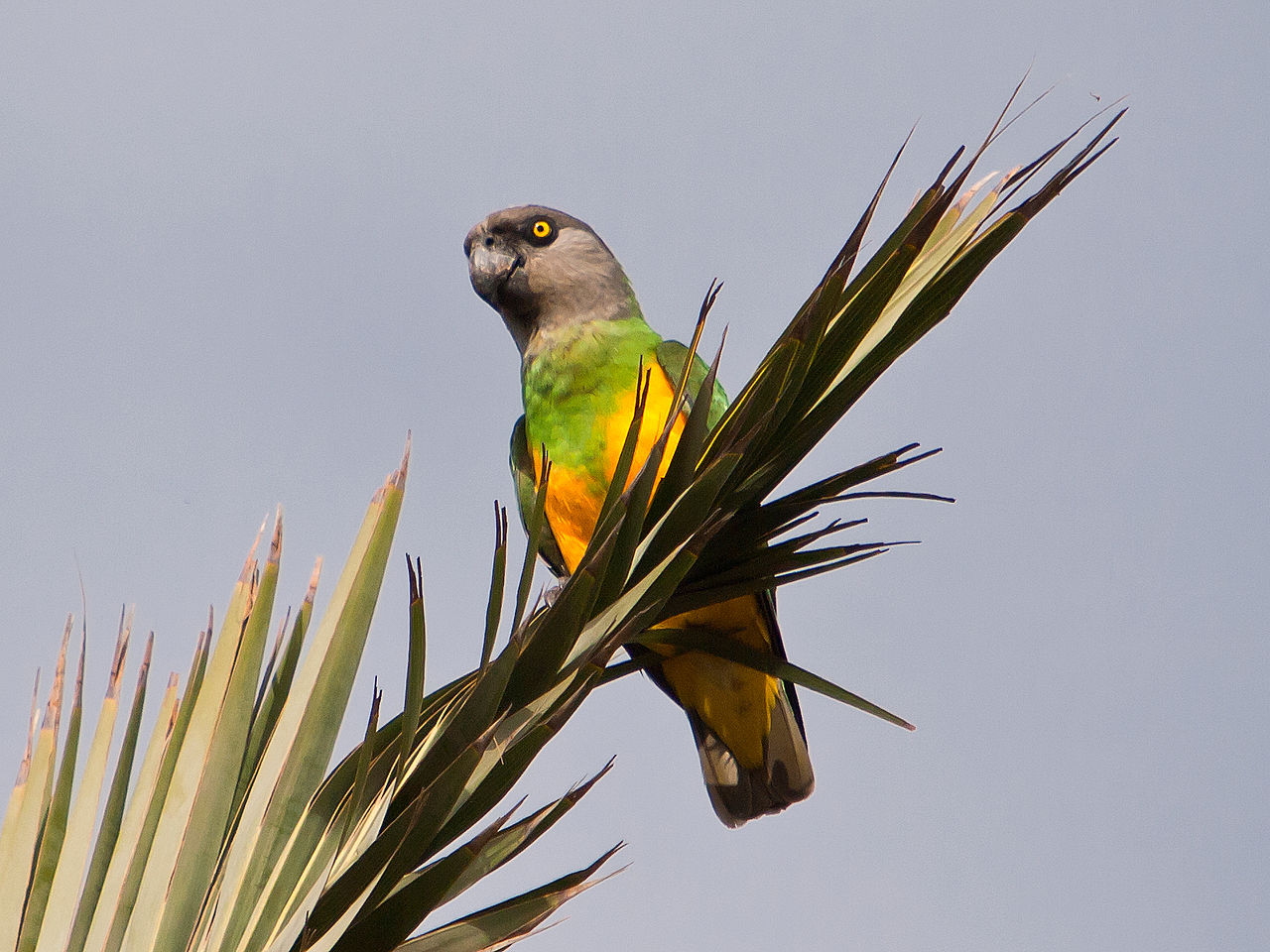The Senegal parrot is a medium-sized parrot found throughout West Africa. They are rare in Australian aviculture, however numbers seem to be increasing steadily and their sale price has significantly dropped in recent years—down from $10,000+ a few decades ago to under $1,000 today.

Housing & Compatibility
Senegal parrots should be housed as one pair per aviary, in an aviary that’s at least three metres long.
They are voracious chewers, and need to be provided with natural non-toxic branches and perches to provide stimulation. Relatedly, don’t house them in an aviary constructed from timber or other easily chewed material.
Newly formed pairs of Senegal parrots need to be gradually introduced to one another, as unfamiliar birds may attack, maim, and kill each other.
Pair introductions are done by placing each bird in a separate cage, unable to make contact with one another. Gradually move the cages closer together and observe the body language of the birds. If they’re aggressive and hostile, give them extra time or consider sourcing an alternative partner. Compatible pairs will eventually sit as close as possible to one another in their respective cages.
Once the birds have been released into a shared aviary, they must be closely observed for the first few weeks for any sign of aggression.
Diet & Feeding
A quality medium parrot seed mix forms the basis of the Senegal parrot’s diet. Seed should be stored in an airtight plastic container to prevent exposure to vermin and moisture. Seed can be soaked or sprouted to improve its nutritional value.
A good diet includes a mix of fruits and vegetables, such as apple, pear and corn. Leafy green vegetables are essential—silverbeet (chard), bok choy, kale, and endive are especially nutritious.
Many breeders prefer to feed pellets instead of seed. Pellets provide a more balanced intake of vitamins and minerals and produce less waste. Commercial supplements such as egg & biscuit mix can be added to the diet to provide additional protein during the breeding season.
Do not feed anything from the list of forbidden foods.

Breeding
Senegal parrots are challenging to breed in captivity. Even experienced breeders will struggle to achieve consistent breeding success.
Senegal parrots demand privacy to breed, and they will not tolerate any incursion into their nesting space. Nestbox inspections should only be done if absolutely necessary, and the inspection should occur from outside the aviary when neither bird is in the box.
The nest box should be placed at the highest possible point in the aviary. Chunks of pine or other soft wood should be placed into the nestbox for the birds to chew. This material will then become the nestbox substrate.
They will lay up to three eggs, which are incubated for 3-4 weeks. Young birds will take between 8-10 weeks to fledge the nest. It is unusual for Senegal parrots to attempt more than once clutch each year.
Sexing
Senegal parrots cannot be visually sexed. Surgical or DNA sexing is required to ascertain accurate results.
Mutations
A yellow mutation of the Senegal parrot has been established, but it does not appear to be present in Australia.
As Pets
Senegal parrots are active and intelligent parrots, making them excellent pets. It is common for them to only bond with a single human, and show timidness or aggression towards others. Their powerful bite and aggressive nature makes them unsuitable for families with children.
Once a bird has bonded with a human, they will generally reject other Senegal parrots, making them unsuitable for breeding.
Health
A strict worm control regime and regular preventative treatment for bacterial and fungal infections is critical to ensure the long-term health of any bird.
With proper care, a Senegal parrot may live for up to 50 years.